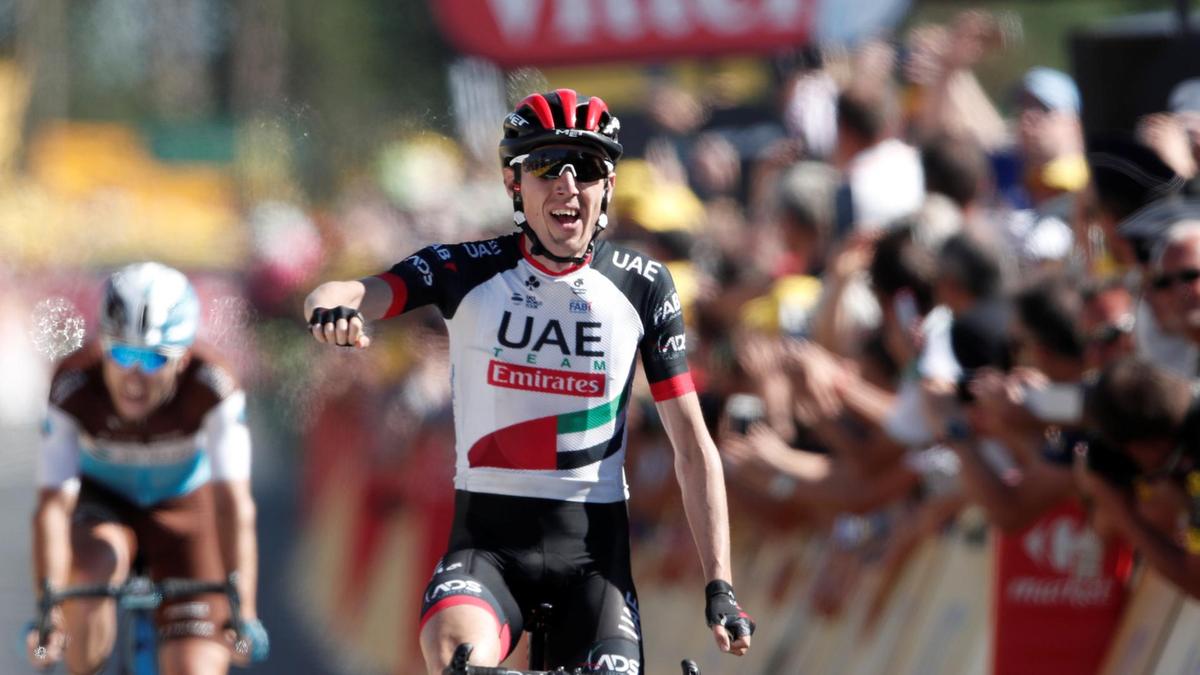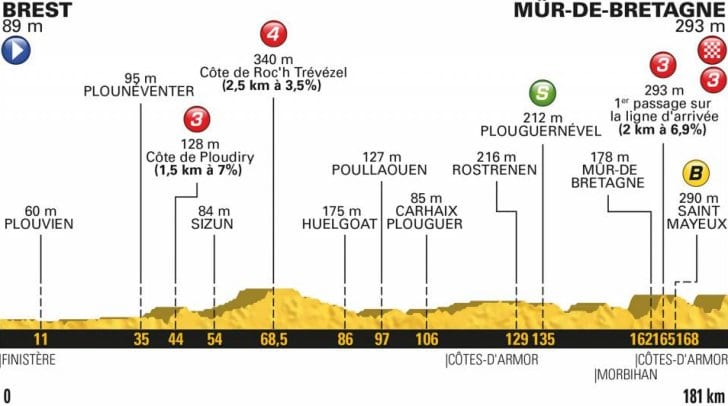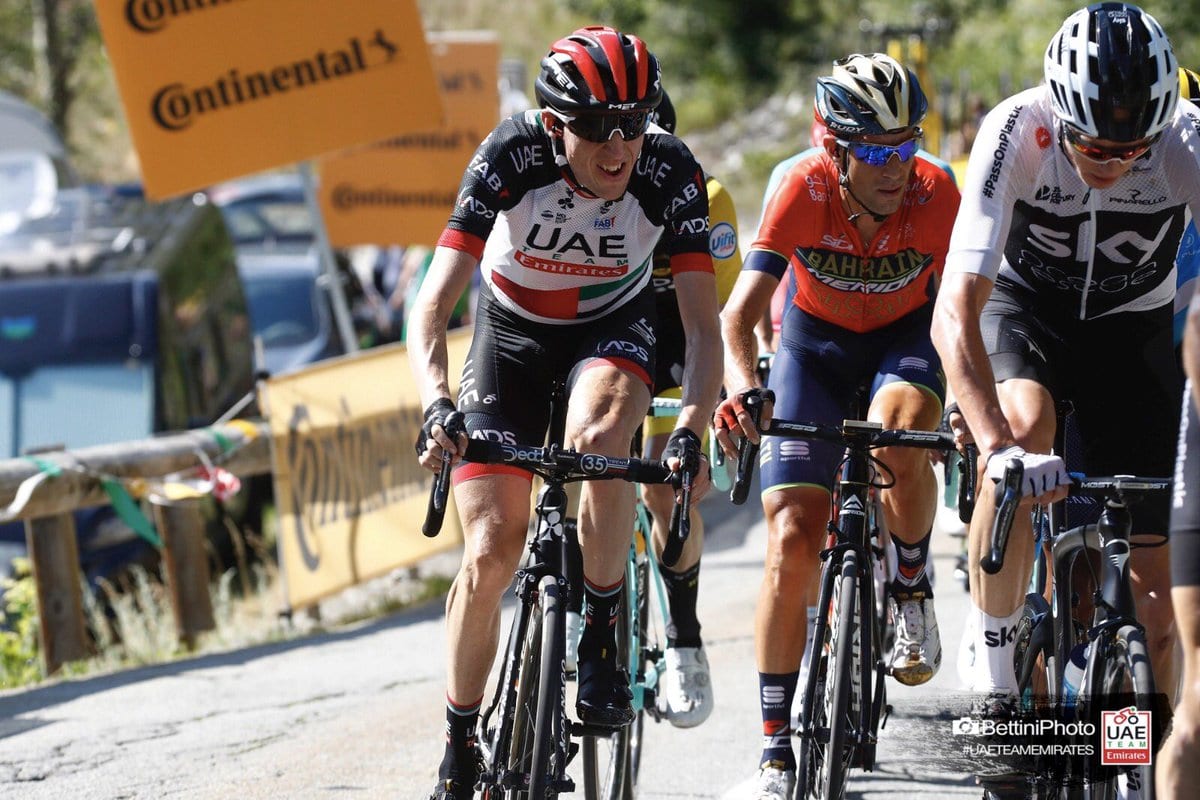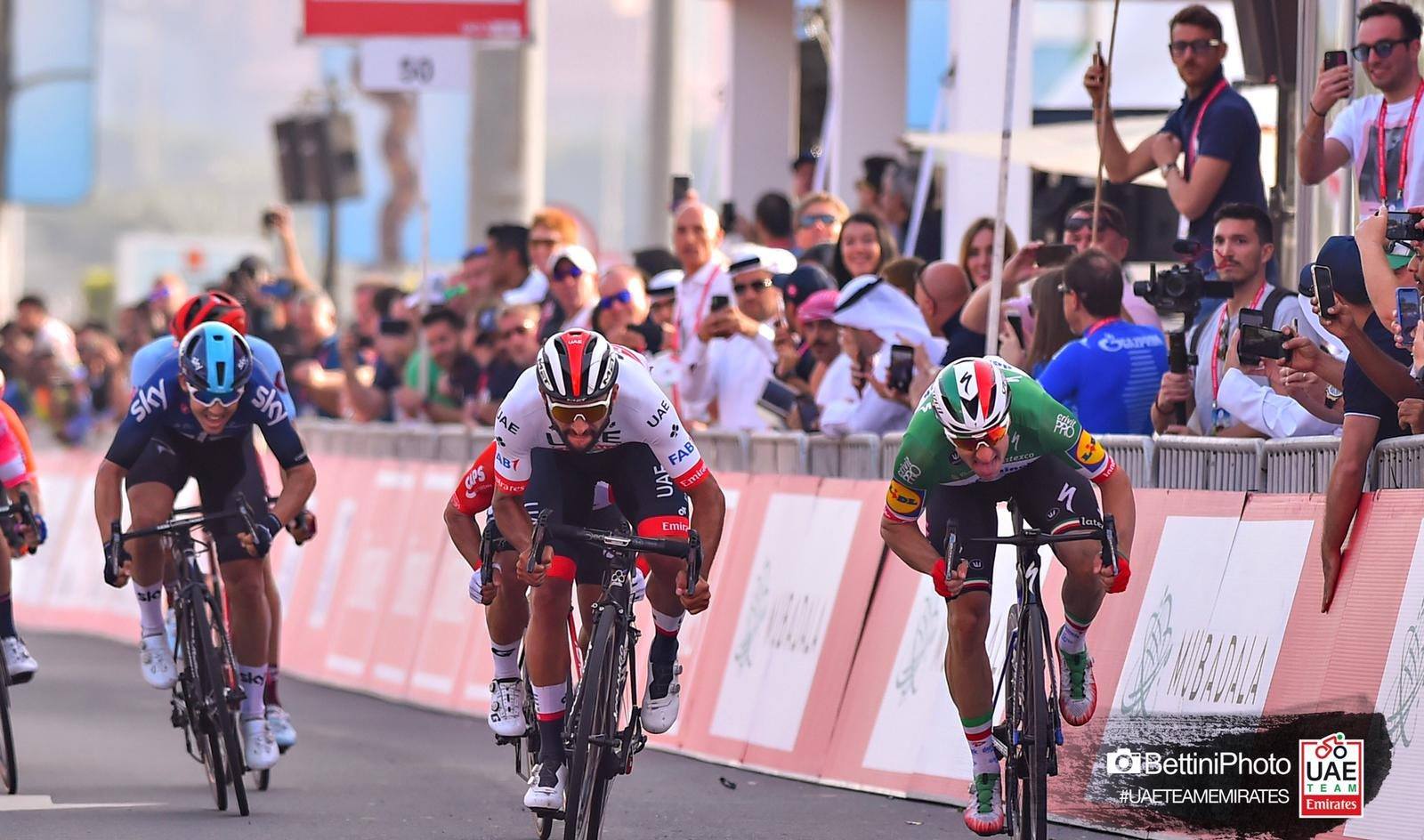Champion System: The ‘trickle-down effect’, done different
jim cotton Interest Hong Kong 14 May 2019
We spoke with hub member Chris Reynolds, General Manager of apparel brand Champion System, about the clothing supplier’s relationship with UAE-Team Emirates, their willingness to venture from the norm in a sport governed by tradition, and their endgame of making the best custom kits that you or I could be wearing on our next weekend ride.
Nowadays, a glance around the clubrun will reveal a fleet of carbon bikes, specced out with power meters and deep section wheels. The after-work crit is like a display-room of nearly-pro level bikes, and riders decked out in helmets, skinsuits and shoes that wouldn’t look out of place on a Tour de France team bus.
With the rise in popularity in racing and competition in the amateur ranks, the search for every marginal gain possible has trickled down from the WorldTour to the Local Bike Shop. Champion System are at the vanguard of this revolution, using the pros as test subjects for the jerseys that you and I might be wearing this summer.
One of Champion System’s big technological revolutions was thrown into the spotlight in the summer of 2018, when Dan Martin of UAE-Team Emirates won stage six of the Tour De France, powering clear of an elite lead group to win atop of the iconic Mur-De-Bretagne, beating Pierre Latour and Alejandro Valverde to the top step of the podium. Though the exhilarating victory was a feast for the media in itself through the shuffles in the GC that it precipitated, something else also caught the media’s eye. Martin was wearing a zipless jersey produced by the team’s apparel partner, Champion System. The next day, several websites (Cycling Weekly and VeloNews) published commentary pieces on this unusual and ground-breaking development.
Why no zip on that jersey adorning both race reports and, more significantly, apparel analyses, around the world? Simple; aerodynamics. With a zip comes the opportunity to have an open jersey – something that catches the wind and could cost watts and time. In a peloton that is now so physiologically similar, every little gain counts. ‘Marginal gains’ you could call it (remember, you heard that phrase here first).
A quick glance at the profile of the relentlessly lumpy and bumpy sixth stage of the 2018 Tour may have you wondering why riders would concern themselves with aerodynamics on that day, but as Chris explains: “There has been research that even down to 25 kph there’s an aero advantage – and these pro climbers go uphill at that rate. And the riders really believe that there’s an advantage to be had in wearing the most aero kit possible, even on a hilly stage. For them, even if the effects are really minimal, just knowing that they’ve done everything they can to boost their performance gives them focus and belief, which translates to performance. The old adage of ‘Look good, feel good, ride good’ is so true.”
The zipless concept was born in a pre-Tour de France team meeting, when UAE-Team Emirates’ management raised their concerns about riders destroying the aero technology in their bikes and endless months of training with a flapping open jersey. Champion System took the obvious yet radical approach and got rid of the zip altogether, and launched the jersey just in time for the Tour; the biggest race of the year, an event where a team’s season could be won or lost, and a sponsor’s investment hit the jackpot or draw a dead hand.
“We didn’t force the zipless jersey on the riders. There’s a lot of pressure at the Tour and sometimes riders don’t want to go changing things,” explains Chris. “But quite a few of the riders were wearing it for the mountain stages – the zipless is a lot lighter than a standard jersey without that zipper and the associated hardware. Whatsmore, the ‘AGILE’ material we use is super-cool and lightweight. It’s almost like a mesh – it’s really open-weave, highly breathable, almost like a summer base layer. It gives a bit of protection, but allows airflow and brings moisture away from the skin”.
As Chris alludes to, not all the riders tried the jersey at the Tour – understandably, changing any element of kit in advance of the biggest race of the year involves an element of risk. And furthermore, it points to the still relatively conservative nature of the sport.
Getting rid of the zip, something we’ve come to see as equally fundamental to a jersey as the three rear pockets and two sleeves, was a bold move. How would the peloton, and perhaps, more importantly, the traditionalists so rife in the amateur ranks, react to a jersey that couldn’t be unzipped? Would we be shorn of that wonderful image of the willowy climber on a scorching day at the Tour, jersey unzipped, heart rate monitor on display, gaunt chest glistening with sweat?
Chris acknowledges that this tradition was one of the reasons it took so long for the zipless concept to be born. “Cycling is a very traditional sport, it’s difficult to bring in change. But some of that spontaneity and magic is leaving the sport with power meters, race radios, and all the other innovations.” Indeed, as Chris alludes to, the WorldTour is now more than ever a place for results and performance, not for the romance and nostalgia of a sport so rife with tales of daredevil attacking, spontaneous tactical decisions, and helmetless riders with open jerseys.
The thought process behind the zipless jersey symbolises the changes in the sport over the generations in many ways. Not only is it a sign of the increasing willingness to innovate in the name of results, but of the increasing levels of investment and commercialisation in the sport.
Nowadays, cycling is not just a sport, but a profession and a business. The seven-figure finance behind a team’s fleet of bikes, crowd of helpers, and all the other accoutrements of the WorldTour doesn’t magically appear from nowhere, but from the coffers of the sponsors that adorn the chest of a rider’s jersey. Seeing the winning rider zip up their jersey to display the name of the company paying their wages as they’re about to cross the line is now as much a trope of cycling as is the post-race platitudes of the performance of the winner’s teammates.
For brands such as Ineos, Movistar, and Emirates Airlines, a rider crossing the line without their brand on display is essentially a waste of money. And in the case of UAE-Team Emirates, having Emirates Airlines – a business also partnering Real Madrid and Arsenal football clubs, and thus with a strong commercial awareness of the PR power of sport – as a major sponsor, the pressure is on to ensure their paymakers get the coverage they demand.
“Getting rid of the zip gives the riders one less thing to think about, and allows them to just turn the pedals. You can guarantee the team director will be in a rider’s ear telling him ‘zip up your jersey, zip up your jersey’ as he’s getting near the line in order to keep the sponsors sweet,” says Chris. “To be frank, some riders forget where their paycheques come from, and in the fervour of a race, they can forget who they’re representing. By having a jersey that’s always done up, the sponsor is always well-represented. Having a rider cross the line with the jersey still open almost becomes a waste for a sponsor; that social media activation opportunity is lost, as their logo won’t make the post-race headline imagery.”
Now, less than a year later, all the R&D that went into the jersey Dan Martin wore to the top of the Muur De Bretagne could be worn by you or I. A browse of the Champion System product builder reveals the zipless jersey as an option for your next club kit.
Champion System are a custom clothing manufacturer, making kits to order for clubs and teams around the world. Unlike Rapha, Castelli et al, Champion System do not sell a range of ‘stock’ lines, a ‘Champ Sys Pro Team Bibshort’ or ‘Champ Sys Climbers’ Jersey’. And unlike the brands on the backs of Ineos, EF-Education First, or the other WorldTour teams, they use the pros as guinea pigs. “The premise behind our support of UAE-Team Emirates is to develop the very best product for our customers. Our end goal is always custom kit for the average Joe, not Dan Martin or Aleander Kristoff,” says Chris.
Chris knew when putting the jersey up as an option for you or I to wear on our next clubrun that it would fill a very particular niche. However, as Chris explains, sales of that garment was not the be-all and end-all. “It’s a jersey for a very specific type of rider. It generated a lot of interest around the world and a lot of media uptake, and we make sales from it. However, for us, the main benefit was that people would enquire about the jersey, and then it would lead on to them placing orders for a more traditional jersey.”
And not only was the jersey intended to be a type of lead magnet, but a PR piece in itself; a signal of Champion System’s commitment to innovation, and their willingness to risk testing products at the highest level in order to ensure it’s the very best for the mass-market.
When we spoke to Chris, the huge mountain passes of the 2019 Giro D’Italia were less than a week away. However, with the variable and typically inclement weather that typifies the Italian mountains in late Spring, he acknowledged that few riders, if any, would be sporting the super-lightweight zipless jersey. However, another product-in-testing would be appearing on UAE-Team Emirates’ riders’ shoulders, and was to be worn by one of the team’s key hopes for the race.
Although UAE-Team Emirates head to the Giro without a true GC contender, they are expected to be a force in the sprints. Along with Italian national champion Elia Viviani of Deceuninck-Quick-Step and Caleb Ewan of Lotto-Soudal, Fernando Gaviria is touted to be fighting for the top step of the sprint podium. And he will be wearing a new road skinsuit that Champion System are developing.
While a ‘roadsuit’ is nothing all that new – riders have been wearing adapted skinsuits in flat stages for several seasons now – that which will be worn by Gaviria and many others on the team this May will be another example of Champion System’s dedication to innovation and development.
“We’ve been seeing skinsuits in the peloton on road stages as riders were finding a skinsuit more comfortable than a typical jersey-shorts combination, and of course, it’s much more aerodynamic than that traditional setup,” says Chris.
“For 2019 we wanted to progress the road-skinsuit idea. We had suggestions from the riders to take the skinsuit used for time trial stages, which was really performance orientated, and transfer that across to a roadsuit, incorporating a zip for toilet breaks, pockets for nutrition etc. So we took the proven TT suit that the riders liked and were really happy with, and engineered it into a roadsuit for 2019.”
Whereas the original Champion System roadsuit was built with a traditional shorts and jersey as the blueprint, this approach is from the opposite side – starting with a time trial skinsuit and adapting its technology and fit to the demands of a road stage. As Chris explains, approaching it from this direction ensures that the key benefits of the skinsuit, namely the aerodynamics and comfort, are fully mapped across.
As with the zipless jersey, the only obstacle to getting the whole team into a skinsuit for road stages seems to be tradition and suspicion around change. “In general, the younger guys are generally keener to wear a roadsuit rather than a jersey-shorts combo, especially Fernando,” says Chris. “Some of the riders even say they don’t want any jerseys and shorts, and that they’ll wear a skinsuit for every stage. However, some of the slightly older, more old-school riders, such as Sergio Henao, don’t want to go anywhere near it.”
So, if you’re looking for kit for your team’s 2020 season, and want something that’s been tested in a battle with the Italian national champion, then going to Champion System may well be the best place to go.
Just as Dan Martin and Fernando Gaviria need every gain possible to give them the results that they’ve spent so long training for, you and I want the best. If you’ve spent months slaving away on the turbo trainer after work and sacrificing family time at the weekends to train and prepare for that big Gran Fondo or stage race, you want to do everything in your power to get the best result possible. And this is evident in Champion System’s sales mix.
As Chris explains: “We’re seeing a much bigger volume of our custom kit sales coming from our most technical apparel now. And it’s becoming more and more expected, people are looking out for an updated version every year, with new developments at every iteration. It’s becoming one of the most important parts of our business. We’re constantly re-investing funds in developing the area and keep looking at other areas to work on.”
A few years ago, suggesting wearing a skinsuit in a road race, or wearing a jersey with a low-cut neckline, would have got you laughed at. Now, it’s more or less the norm. With Champion System constantly testing on the best and investing for yet more innovation, all with the aim of providing you, the punter, the very best, what might you see in your next weekend road race?
The possibilities are endless. But if you want some clues, just keep your eye on what the riders at UAE-Team Emirates are wearing now to know what you could be wearing in six months time.
-
Champion System
Visit site




